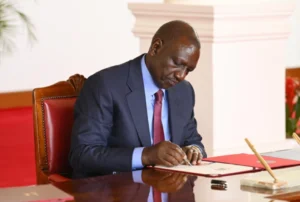KDIC: The Government Agency Securing Kenyans’ Bank Deposits

Millions of Kenyans own bank accounts and make deposits or receive salaries for those who’ve been employed. Banks are considered safe spots for storing money. However, do you know that banks can collapse with your deposits? If so, what happens in that case?
KDIC Mandate and Functions
That is where the Kenya Deposit Insurance Corporation (KDIC) comes in. KDIC is a state agency established under the Act of Parliament, KDI Act Cap. 487C, whose mandate is to provide deposit Insurance for member institutions (banks), Liquidate, and Wind up troubled banks.
In fulfilling its mandate, KDIC protects depositors against the loss of all their deposits or bank balances in the unlikely event of a bank failure by providing payments of insured deposits. This is important as it helps enhance depositors’ confidence, in that customers get the reassurance that their money is safe and they can still get it back even in the unfortunate event that a bank goes under.
When talking to Kenyans, a good number will tell you they don’t save money in financial institutions because they fear losing it. Still, this reassurance enhances confidence while inspiring a saving culture.
In addition to providing deposit insurance, the corporation also provides incentives for sound risk management and promptly resolves problem banks to mitigate any failure proactively.
Brief History of KDIC and Member Institutions
KDIC Was Founded in 1985 as the Deposit Protection Fund Board (DPFB). It officially started operating on 1 September 1986 and received its first case on 31 January 1993, in which it was required to pay off protected depositors and undertake a liquidation process.
Since then, it has evolved from DPFB into KDIC and grown in membership. According to the KDI Act Cap.487C, KDIC membership is compulsory and comprises all institutions licensed as deposit-taking institutions and regulated by the Central Bank of Kenya.
As of October 2024, KDIC membership stood at thirty-seven (37) commercial banks, one (1) mortgage institution, and fourteen (14) microfinance banks.
Bank Crises in Kenya
KDIC was established in response to challenges presented by banking crises and has operated for over thirty years. Before and after its establishment, the country has experienced several bank crises. Below is a breakdown of some of the instances:
Crises in 80s
The first banking failure in Kenya was recorded in 1984 when two locally owned institutions collapsed and were liquidated by the official receiver. Unfortunately, depositors were not compensated, and as such, they lost their money, and the public lost confidence in financial institutions.
In 1989, the country faced its second banking setback, where nine financial institutions suffered liquidity strains, leading to a systemic crisis. The nine financial institutions were Jimba Credit Corporation Limited, Union Bank of Kenya Limited, Kenya Savings and Mortgages Limited, Estate Finance Company of Kenya Limited, Estate Building Society, Business Finance Company Limited, Citizen Building Society, Nationwide Finance Company Limited, and Home Savings and Mortgages Limited.









